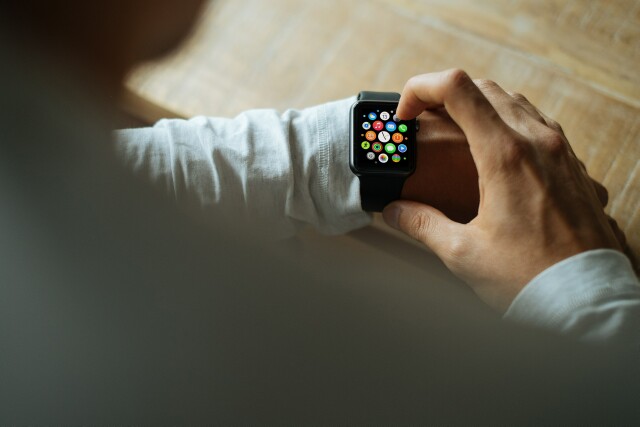Today’s Innovation Landscape: Topics to Get Excited About

We’re at an important and exciting inflection point, the time between Q1 and Q2 when the year’s innovations are starting to take shape and when as a collective industry we can take stock of early year news and announcements to plot out likely developments for the rest of 2018. These informed predictions and projections help to prepare clients and colleagues for the opportunities and challenges that lie ahead.
This year is particularly interesting as, on the surface, it does not seem like there have been giant leaps in progress with any of the usual acronyms associated with the Fourth Industrial Revolution, including AR, VR, A.I., IoT and voice. It feels like these technologies are on a bit of a treadmill, still waiting for their “iPhone moment” of scale, killer app and utility to drive their respective categories to ubiquity. Behind the scenes, though, there has been tremendous development and progress on these technological fronts. (Pro tip: If you haven’t, please watch AlphaGo on Netflix.) Despite these under-the-hood advancements, there has been a lack of evidence that any of the categories will achieve mainstream commercial success any time soon. One can’t help but feel disappointed at the stalled momentum.
Such a defeatist attitude is myopic, however, when considering how incredibly early we are in the current tech cycle, and how much our already high expectations have been artificially inflated by our own hype. We must also be careful not to discredit the innovation narrative, as it’s not only about the product pipelines of tech giants. To get the full picture, it is also important to look at startups and emergent consumer behaviors, both places where marketplace dynamism is found in abundance.
Here is what I’m most looking forward to for the rest of 2018. These aren’t predictions or declarations, per se, but rather observations on what some of the most interesting ideas are suggesting about our tech-fueled future. More often than not this technology conversation sits at the meaningful and consequential intersection of culture, policy and wellness.
VR’s “Aha” Moment
The VR industry’s hangover from an unremarkable holiday season carried over into the New Year, where despite fantastic advancements in things like eye tracking, haptics and social VR it is generally difficult to find the same enthusiasm as in years past. The cost of entry to high-end VR experiences is still too high for mainstream consumers, and there persists a fundamental design issue in that current headsets are still too heavy, bulky and cumbersome. This all has a chance to change later this year as Facebook-owned Oculus is set to release the Oculus Go, which promises high-end optics, untethered to a computer or smartphone, starting at under $200. While this shouldn’t be seen as any sort of panacea, it will get the attention of talented developers, many of whom have been waiting for a critical amount of scale to justify the re-direction of dev resources from smartphone apps to Virtual Reality experiences.
Wearable Tech Finds Its Killer App
The knock against wearable technology devices is that, despite the category’s ability to sell millions of units -- and in the case of the Apple Watch seriously disrupt the Swiss luxury timepiece market -- they are solutions looking for problems to solve. Everyone knows someone who has discarded a wrist-based tracker after just a short amount of time because it just wasn’t that useful. Recent research findings suggest that there may finally be a killer app: Health, and not in the way of step counting and proprietary points systems. UCSF has published that A.I.-based tracking via the Cardiogram app on the Apple Watch can detect things like hypertension, sleep apnea, atrial fibrillation and diabetes with greater than 80% accuracy. The availability of health data from wearable devices can have dramatic effects on preventative health, something that is sorely needed considering the state of the healthcare industry in America.
The Nascent Blockchain Application Layer
Now that crypto fever has subsided (for the time being, anyway), it’s worth looking into the fundamental technology that is allowing for such decentralized currency. Blockchain is still in its infancy, but already promises to be a General Purpose Technology that will eventually have the ability to displace or disintermediate nearly every category that requires a transaction based on trust. The applications that will be built on top of Blockchain could lead to entirely new systems of commerce, payment and ownership. It’s difficult to explain what these applications will look like, since Bitcoin now exists in a way that the internet once existed prior to the invention of the web browser. Adoption of Blockchain solutions may radically change the way to do media buying, paywalls and ad verification. With all of the attention and enthusiasm for decentralized computing, we may see the first consumer-accessible Blockchain applications later this year.
The Drive to Disconnect
My best friend and I are planning a long weekend trip to upstate New York in late spring, with the expected food and drink, hikes, board games and a fire pit -- but without the distraction of smartphones or any screen-based technology. All devices are strictly prohibited. So unless there is an absolute emergency, there will be no checking e-mails, texting and Instagram Story uploads. No, we’re not crazy. We’re merely following the trend. The past year has seen a notable uptick of what are usually FOMO-generating experiences -- from Dave Chappelle’s series of shows at Radio City Music Hall to brand-sponsored concerts at Art Basel Miami Beach -- that have forbidden the use of smartphones on-premise. This trend has now reached a fever pitch as discussions about the effect of screens on childhood and foreign interference in elections have entered the mainstream. The need to disconnect to better appreciate a live experience and/or for reasons of mental health may feel contrary to the innovation narrative, but it is something to take into serious consideration moving forward as consumers start to question addiction and overdependence on personal devices.
The Return of Context and Creativity
For those of us who came of age in this industry in the pre-programmatic days, there is a feeling in the air of possibility and creativity that hasn’t existed since prior to the last major cycle of technological development. If the popular theory of technology S-Curves is to be believed, we are at the special transition period where an established, now-commodity technology (smartphones) is being replaced or augmented by something entirely new (AR, VR, A.I., IoT, Blockchain, etc.). This intersection allows for those of us who exercise a combination of right and left brain thinking to imagine what the future could look like. While engineering and programming talent are no doubt laying the foundation for these new technologies, it is context and creativity that will help them scale and become relevant and meaningful to consumers. It isn’t overly dramatic to say that as participants in the marketing and advertising industries we all have the unique ability to shape the next decade(s) of our future. So despite all of the uncertainty as to which new technology with “be the next iPhone” one thing is for sure: It’s going to be an interesting, unpredictable and exciting ride.
Click the social buttons above or below to share this content with your friends and colleagues.
The opinions and points of view expressed in this content are exclusively the views of the author and/or subject(s) and do not necessarily represent the views of MediaVillage.com/MyersBizNet, Inc. management or associated writers.


